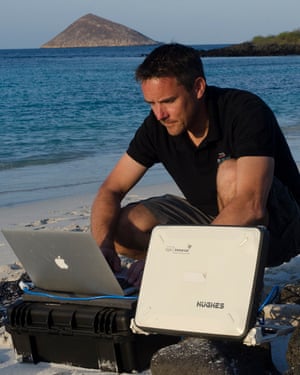Really long article, link has the other 80% of it.
The Great Barrier Reef: a catastrophe laid bare
Australia’s natural wonder is in mortal danger.
Bleaching caused by climate change has killed almost a quarter of its coral this year and many scientists believe it could be too late for the rest.
Using exclusive photographs and new data, a Guardian special report investigates how the reef has been devastated – and what can be done to save it
by Michael Slezak
Tuesday 7 June 2016 09.54 AEST
2576 Shares
439 Comments
The stench of death
It was the smell that really got to diver Richard Vevers.
The smell of death on the reef.
“I can’t even tell you how bad I smelt after the dive – the smell of millions of rotting animals.”
Vevers is a former advertising executive and is now the chief executive of the Ocean Agency, a not-for-profit company he founded to raise awareness of environmental problems.
After diving for 30 years in his spare time, he was compelled to combine his work and hobby when he was struck by the calamities faced by oceans around the world.
Chief among them was coral bleaching, caused by climate change.
His job these days is rather morbid. He travels the world documenting dead and dying coral reefs, sometimes gathering photographs just ahead of their death, too.
With the world now in the midst of the longest and probably worst global coral bleaching event in history, it’s boom time for Vevers.
Even with all that experience, he’d never seen anything like the devastation he saw last month around Lizard Island in the northern third of Australia’s spectacular Great Barrier Reef.
As part of a project documenting the global bleaching event, he had surveyed Lizard Island, which sits about 90km north of Cooktown in far north Queensland, when it was in full glorious health; then just as it started bleaching this year; then finally a few weeks after the bleaching began.
“It was one of the most disgusting sights I’ve ever seen,” he says.
“The hard corals were dead and covered in algae, looking like they’ve been dead for years.
The soft corals were still dying and the flesh of the animals was decomposing and dripping off the reef structure.”
It’s the sort of description that would be hard to believe, if it wasn’t captured in photographs.
In images shared exclusively with the Guardian, the catastrophic nature of the current mass bleaching event on previously pristine parts of the Great Barrier Reef can now be revealed.
FacebookTwitterPinterest
Richard Vevers, the founder and chief executive of the Ocean Agency, a not-for-profit that is documenting the longest coral bleaching event in history. Photograph: the Ocean Agency
Coral bleaches when the water it’s in is too warm for too long.
The coral polyps gets stressed and spit out the algae that live in inside them.
Without the colourful algae, the coral flesh becomes transparent, revealing the stark white skeleton beneath.
And because the algae provides the coral with 90% of its energy, it begins to starve.
Unless the temperatures quickly return to normal, the coral dies and gets taken over by a blanket of seaweed.
Once that happens it can take a decade for the coral to recover – and even then that recovery depends on the reef not being hit by other stressors such as water pollution.
Vevers’ images show how the once brilliant coral first turned white and then became covered in seaweed.
While the hard corals are still holding their structure under the seaweed blanket, the soft corals are dying; dripping off the dead coral skeletons.
The thick seaweed is a sign of extreme ecosystem meltdown.
Fish can no longer use the coral structure as shelter – blocked by the plants – and before long the coral structures themselves are likely to collapse, leaving little chance of full recovery within the next 10 years.
When the coral dies, the entire ecosystem around it transforms.
Fish that feed on the coral, use it as shelter, or nibble on the algae that grows among it die or move away.
The bigger fish that feed on those fish disappear too.
But the cascading effects don’t stop there. Birds that eat fish lose their energy source, and island plants that thrive on bird droppings can be depleted.
And, of course, people who rely on reefs for food, income or shelter from waves – some half a billion people worldwide – lose their vital resource.
http://www.theguardian.com/environment/2016/jun/07/the-great-barrier-reef-a-catastrophe-laid-bare
- Forums
- Science & Medicine
- The Great Barrier Reef: a catastrophe laid bare
The Great Barrier Reef: a catastrophe laid bare
- There are more pages in this discussion • 33 more messages in this thread...
You’re viewing a single post only. To view the entire thread just sign in or Join Now (FREE)
Featured News
Featured News
The Watchlist
LU7
LITHIUM UNIVERSE LIMITED
Alex Hanly, CEO
Alex Hanly
CEO
Previous Video
Next Video
SPONSORED BY The Market Online





